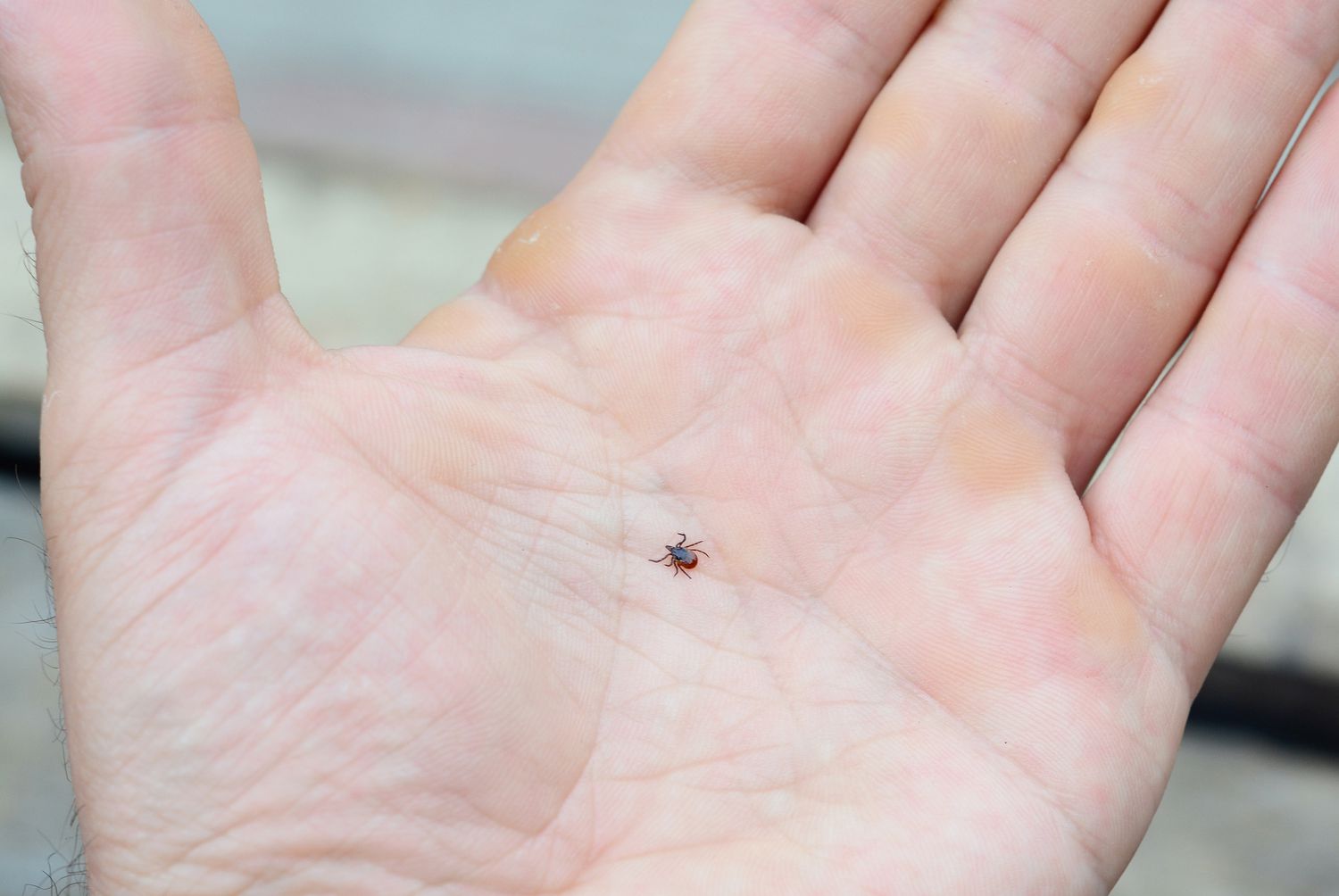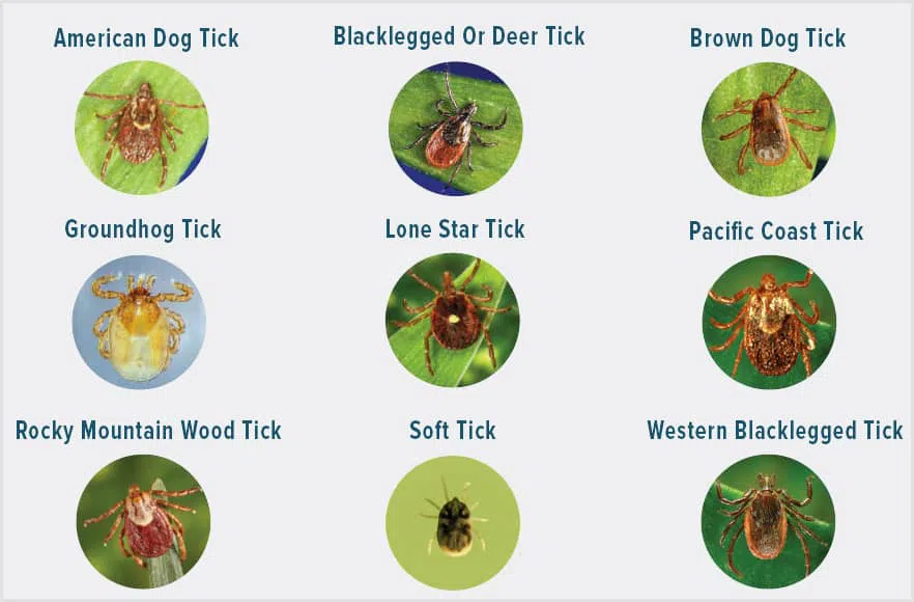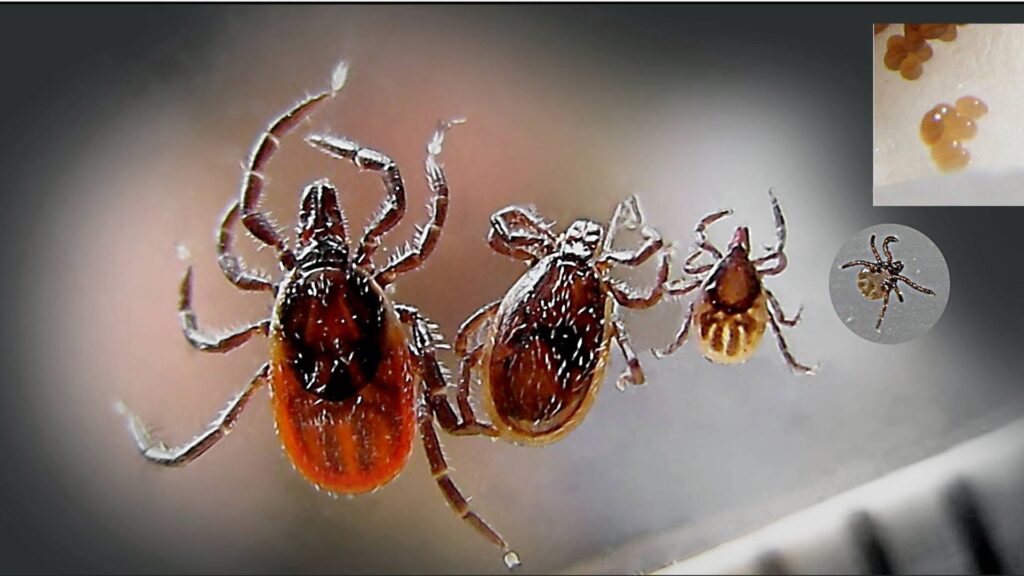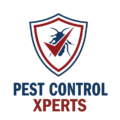Florida’s subtropical climate—featuring year-round warmth, ample humidity, and mild winters—allows many pests, including ticks, to remain active virtually nonstop. Unlike colder regions, where freezing temperatures naturally reduce tick populations for months, Florida’s gentle cold season rarely hinders their development. In busy urban zones like Miami—where residential areas, tourist attractions, and commerce align—ticks can reside unnoticed in shaded lawns, latch onto pets, and even find their way indoors if conditions remain favorable. This service page dives into why ticks thrive in Florida, the signals of an infestation, and why partnering with a professional tick exterminator is the most reliable way to eliminate these persistent parasites and protect your home, business, and the people or pets within.
Whether you own a property in Miami or manage real estate in Miami Beach, Key Biscayne, Miami Gardens, or North Miami Beach, detecting tick activity early—and acting swiftly—shields occupants, pets, and visitors from itchy bites and potential health risks, saving you from the frustration and cost of repeated attempts at DIY solutions.
Why Ticks Flourish in Florida
Mild Winter Climate
Ticks in colder states experience population die-offs or go dormant under subfreezing weather. Florida’s mild winter seldom sees extended frosts, meaning ticks can remain active outdoors and indoors all year. In heated or air-conditioned buildings, temperatures typically stay around 65–85°F, ensuring ticks feed and breed even during winter months.
High Humidity
Ticks need moisture for their eggs and larval stages. Florida’s frequent rainfall, lawn irrigation, and inherent humidity keep soils damp, offering ticks ideal developmental spots—leaf litter, shaded corners, or mulch beds. Even small pockets of condensation around air conditioners or water fixtures can sustain tick larvae until they find hosts.
Ample Hosts
Ticks attach to warm-blooded animals—pets (dogs, cats), wildlife (raccoons, opossums), and humans. In densely populated areas like Miami Gardens or near beaches and parks, an ongoing supply of potential hosts circulates daily. Pets roaming outside or wildlife crossing lawns deposit ticks that later attach to other animals or people.
Constant Movement of People and Goods
Florida’s strong tourism, relocations, and shipping routes provide frequent opportunities for ticks to hitchhike rides in luggage, pet carriers, or secondhand items. Multi-family residences, hotels, or short-term rentals near Key Biscayne or Miami Beach can see recurring tick introductions if occupant diligence falters or housekeeping misses small stowaways.
Multiple Tick Species
A handful of species commonly infest Florida:
- American Dog Tick: Prefers dogs, can feed on humans, usually found in grassy zones.
- Brown Dog Tick: Known to breed entirely indoors, occupying carpets or behind furniture if introduced by a host.
- Lone Star Tick: Recognizable by a white spot on adult females’ backs; can bite humans and various animals.
- Blacklegged (Deer) Tick: Though Lyme disease is less common in Florida than northern areas, these ticks can still pose infection risks.
All can quickly escalate from a few uninvited hitchhikers to an ongoing infestation if left unchecked.

Telltale Signs of a Tick Infestation
- Excessive Pet Scratching or Irritation
- Dogs or cats repeatedly biting at hindquarters, bellies, or near ears.
- On close inspection, you may see small, dark ticks attached to the skin.
- Dogs or cats repeatedly biting at hindquarters, bellies, or near ears.
- Ticks on Clothing or Skin
- Ticks latch on from ground-level vegetation, climbing pant legs or socks.
- Noticing ticks crawling indoors or finding them attached to ankles or lower legs indicates they’ve established in your yard or home.
- Ticks latch on from ground-level vegetation, climbing pant legs or socks.
- Indoor Tick Sightings
- Brown dog ticks breed inside carpets, furniture seams, or baseboards. If you spot them frequently indoors, an established cycle likely exists.
- Seeing multiple ticks climbing walls or hidden behind curtains is a red flag of entrenched activity.
- Brown dog ticks breed inside carpets, furniture seams, or baseboards. If you spot them frequently indoors, an established cycle likely exists.
- Bites on Humans
- Ticks embedded in skin feeding for hours or days, leaving small red bumps once removed.
- If fleas or bed bugs seem unlikely, ticks become the prime suspect for repeated bites around ankles or waist.
- Ticks embedded in skin feeding for hours or days, leaving small red bumps once removed.
- Wildlife or Stray Animals
- Raccoons, stray cats, or opossums may cross your yard, dropping ticks in shaded corners.
- Pets or children playing outside can pick up newly hatched ticks from these spots.
- Raccoons, stray cats, or opossums may cross your yard, dropping ticks in shaded corners.
- Anemia or Weakness in Pets
- Heavy tick loads can draw enough blood to weaken animals, sometimes causing pale gums or lethargy.
- Dogs heavily infested might need vet care, especially if tick-borne diseases manifest.
- Heavy tick loads can draw enough blood to weaken animals, sometimes causing pale gums or lethargy.
The Risks of Ignoring Ticks
Potential Disease Spread
Ticks carry pathogens like Lyme disease, ehrlichiosis, or Rocky Mountain spotted fever. While Lyme is less prevalent in Florida than northern states, prolonged attachment can still infect people or animals with other illnesses. Pets face similar concerns, such as canine ehrlichiosis or babesiosis.
Persistent Bites and Host Discomfort
Ticks feed slowly, embedding mouthparts for hours or days. Bites cause itching or irritation, leading to occupant stress over hidden pests. Removing ticks can be painful or tricky, especially if they latch onto less visible body parts.
Rapid Population Expansion
A few ticks can lay numerous eggs, which hatch into larvae seeking hosts in grass or upholstery. Florida’s mild weather accelerates life cycle completion, producing multiple generations unless occupant or professional measures break the cycle.
Costly DIY Attempts
Untreated infestations force occupants to vacuum, launder, or attempt chemical sprays regularly—often missing hidden eggs or pupae. Each partial success offers fleeting relief, with new ticks emerging soon after. Over time, occupant frustration and expense escalate.
Pet Health Hazards
Beyond itching, ticks may cause allergic reactions, hair loss, or transmit parasites that hamper a pet’s well-being. Frequent vet consultations or medications add to occupant stress and cost. Early occupant detection and professional intervention lower risk for pets significantly.
Why a Professional Tick Exterminator Is Essential
Holistic Control Across All Life Stages
A tick exterminator addresses fleas—typo, sorry—ticks at each stage (egg, larva, nymph, adult) through insect growth regulators (IGRs) plus adulticides. This synergy kills existing adults while preventing larvae from maturing, cutting off future generations that hamper purely adult-targeting DIY efforts.
Detailed Property and Interior Assessments
Professionals survey shady lawn edges, under decks, or dense shrubs for ticks or eggs. Inside, they check pet areas, carpets, furniture seams, or baseboards. By honing in on breeding grounds, they apply insecticides precisely where ticks exist, maximizing kill rates while minimizing occupant or pet chemical exposure.
Safe, Targeted Chemical Use
Inexperienced pesticide usage risks occupant or pet harm. Licensed exterminators know where to place insect growth regulators or adulticidal sprays—like yard corners or carpet edges—eliminating ticks without flooding living spaces. This measured approach yields potent kills and occupant peace of mind.
Collaboration on Pet Care
As ticks often hitch rides indoors via pets, occupant synergy—such as using vet-approved flea-and-tick preventatives, grooming animals frequently, or laundering pet bedding—reinforces yard or indoor treatments. This unity blocks fresh tick arrivals from re-establishing a foothold after professional eradication.
Follow-Up Assurance
Tick eggs can hatch weeks after initial treatments. Re-checks confirm newly hatched ticks also meet lethal conditions before breeding anew. Occupants reporting re-sightings guide exterminators to adjust or intensify certain yard corners or interior cracks, locking in a tick-free status.

Typical Methods for Tick Treatments
- Inspection and Mapping
- Exterminators explore lawn edges, mulched areas, or shady zones for tick eggs, larvae, or adult clusters. Inside, carpets and furniture near pet corners are prime spots.
- Identifying the tick species (brown dog ticks vs. others) focuses whether heavy indoor or yard emphasis is needed.
- Exterminators explore lawn edges, mulched areas, or shady zones for tick eggs, larvae, or adult clusters. Inside, carpets and furniture near pet corners are prime spots.
- Vacuuming and Steam
- Vacuuming carpets, rugs, or upholstered furniture scoops up adult ticks, larvae, or eggs.
- Steam cleaning kills ticks instantly, reaching deep into fabrics or pet bedding without chemical residue.
- Vacuuming carpets, rugs, or upholstered furniture scoops up adult ticks, larvae, or eggs.
- Insect Growth Regulators (IGRs)
- IGRs halt larval development, preventing them from reaching egg-laying adulthood.
- Often paired with adulticides, they deliver robust coverage across each tick life stage.
- IGRs halt larval development, preventing them from reaching egg-laying adulthood.
- Yard Sprays or Granules
- Professionals apply tick-targeted insecticides in shady lawns or around fences, under decks, or near property edges.
- Granules or sprays often activate with moisture, killing ticks at ground level or in leaf litter.
- Professionals apply tick-targeted insecticides in shady lawns or around fences, under decks, or near property edges.
- Indoor Insecticide Applications
- For severe indoor infestations (especially brown dog ticks), regulated sprays or dust around baseboards, pet zones, and furniture cracks hamper tick emergence.
- Occupants typically vacuum daily for a couple of weeks to remove newly emerging ticks.
- For severe indoor infestations (especially brown dog ticks), regulated sprays or dust around baseboards, pet zones, and furniture cracks hamper tick emergence.
- Pet Preventatives
- Exterminators reinforce occupant usage of vet-endorsed topical, oral, or collar treatments for dogs and cats.
- Grooming and checking pets daily for attached ticks hamper re-infestations.
- Exterminators reinforce occupant usage of vet-endorsed topical, oral, or collar treatments for dogs and cats.
- Follow-Up Visits
- Pupae or eggs can hatch 2–3 weeks after initial exposure. Re-check occupant or manager feedback to confirm no adult ticks reappear.
- Additional spot treatments or occupant instructions finalize total control.
- Pupae or eggs can hatch 2–3 weeks after initial exposure. Re-check occupant or manager feedback to confirm no adult ticks reappear.
Service Areas: Miami, Miami Beach, Key Biscayne, Miami Gardens, North Miami Beach
Ticks can infest properties anywhere in Florida, but here we emphasize solutions in or around Miami, a cosmopolitan city linking neighborhoods, tourism, and commerce. Our tick exterminator assistance also extends to:
- Miami Beach: Frequent occupant turnover in rentals or hotels can see repeated tick introductions if occupant vigilance slips.
- Key Biscayne: Island living with warm breezes, potentially welcoming wildlife crossing yards or stray animals depositing ticks.
- Miami Gardens: Densely populated areas or multi-family residences can inadvertently transport ticks between neighbors or shared yard corners.
- North Miami Beach: Blending older homes with new developments, each vulnerable if yard edges remain untrimmed or occupant pet care is inconsistent.
No matter your locale, Florida’s near-constant warmth fosters tick multiplication. Occupant diligence plus specialized extermination remain key to hampering or eradicating these persistent parasites.

Why Choose Us
Florida-Oriented Tactics
We blend recognized tick control practices—like insect growth regulators, yard granules, occupant synergy—to match Miami’s humid climate, occupant lifestyles, and near-year-round tick activity. Our approach surpasses sporadic store-bought remedies, ensuring each life stage meets lethal conditions.
Thorough Property Surveys
Technicians analyze yards—checking shady spots, under vegetation, or along fence lines—for tick eggs or larvae. Inside, they check furniture seams, rugs, and baseboards near pets. By understanding the infestation’s extent, we allocate insecticides or steam treatments precisely, avoiding occupant or pet overexposure.
Balanced, Regulated Insecticides
We target known tick harborage sites—lawn corners, pet bedding, or furniture edges—rather than drenching entire living spaces. Insect growth regulators hamper larvae from evolving, while adulticides kill current adults. This synergy beats partial attempts focusing on just adult ticks.
Emphasis on Pet Care
Because ticks often arrive and spread via pets, occupant synergy—like administering veterinarian-endorsed flea-and-tick preventatives, grooming animals consistently, or laundering pet bedding weekly—ensures yard or indoor treatments remain effective long after professionals leave.
Follow-Up and Re-Checks
Tick pupae can hatch weeks post-treatment. Our re-check visits or occupant calls confirm newly emerged ticks also face lethal conditions. If occupant sightings continue, we pivot to additional spot spraying or occupant guidelines, sealing the success of full-cycle elimination.
Next Steps
Seeing your pets scratching intensely, discovering small black specks in their fur, or noticing tick bites on ankles or legs? Contact us to learn more or schedule your service. Our tick treatments in Miami, Miami Beach, Key Biscayne, Miami Gardens, and North Miami Beach combine comprehensive yard or indoor checks, specialized insecticides or growth regulators, occupant-friendly instructions, and essential follow-ups—eradicating ticks and preventing their return.
Prompt action curbs occupant frustration over lingering bites, spares pets from potential diseases, and stops repeated do-it-yourself efforts that only solve part of the tick lifecycle. Rely on our Florida-focused tick exterminator expertise to break each tick stage, restoring a comfortable, pest-free environment amid the Sunshine State’s mild winter and continuous warmth.
Maintaining a Tick-Free Property
After experts reduce or eliminate ticks, occupant diligence keeps them from re-infesting:
- Frequent Lawn Care
- Mow grass regularly, trim shrubs, and clear leaf litter to remove shady, moist breeding pockets.
- Keeping yard edges tidy impedes ticks from lurking in thick vegetation.
- Mow grass regularly, trim shrubs, and clear leaf litter to remove shady, moist breeding pockets.
- Deter Wildlife and Strays
- Secure trash bins, avoid leaving pet food out, and fence off yard corners if possible.
- Wildlife or stray animals often drop ticks in grassy or mulched areas.
- Secure trash bins, avoid leaving pet food out, and fence off yard corners if possible.
- Vet-Approved Pet Preventatives
- Collars, topicals, or oral meds shield dogs or cats year-round.
- Groom pets often, inspecting fur (especially near ears or neck) for newly attached ticks.
- Collars, topicals, or oral meds shield dogs or cats year-round.
- Vacuum and Steam Indoors
- Vacuum carpets, rugs, and furniture frequently, disposing contents sealed in plastic outside.
- Steam cleaning kills hidden eggs or larvae in upholstery seams or deep carpet fibers.
- Vacuum carpets, rugs, and furniture frequently, disposing contents sealed in plastic outside.
- Wash Pet Bedding on Hot Cycles
- Launder bedding or soft toys weekly, using high heat to destroy any ticks or eggs.
- Keep bedding in airy spots to minimize damp conditions larvae prefer.
- Launder bedding or soft toys weekly, using high heat to destroy any ticks or eggs.
- Minimize Dampness
- Repair leaky hoses, faucets, or AC lines that pool water in yard corners or around the house.
- Damp soils help larvae survive, so dryness helps deter them.
- Repair leaky hoses, faucets, or AC lines that pool water in yard corners or around the house.
- Monitor New Signs
- If occupant sightings or pet scratching reappear, contact an exterminator quickly—eliminating a small fresh incursion before it expands.
- Re-check yard boundaries, adjusting any insecticidal approach if new ticks slip through.
- If occupant sightings or pet scratching reappear, contact an exterminator quickly—eliminating a small fresh incursion before it expands.
By merging occupant vigilance—like yard cleanup, sealed trash, and pet preventatives—with specialized tick treatments, Miami-area property owners keep ticks from regaining control. Even as Florida’s mild winter and humid climate promote year-round tick survival, integrated occupant efforts plus professional insect growth regulators and adulticides successfully repel or terminate these blood-feeding pests, preserving safety and comfort across residential or commercial settings.
